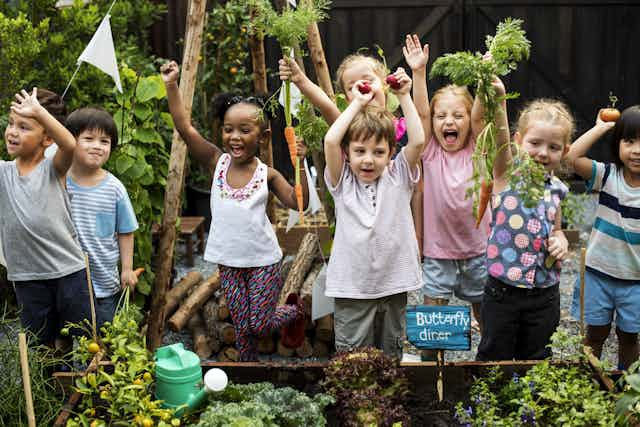We trust schools to steward the children of today into the adults of tomorrow. They’re certainly apt at nurturing our ability to calculate, compete, and cram – but what about our capacity to connect? As a researcher in community development, I worry that we’re spending too much time assessing children as individuals, and not enough helping them to feel part of something much more valuable – communities.
Young people are becoming more and more disengaged from the environment and people that surround them. Many spend less time outside than prison inmates. Belief that their opinions make a difference is low, while mistrust in charities, adults and world leaders is high. Mental health issues are on the rise, with children feeling more lonely than any other generation.
Cultivating a sense of community, be it through litter picks, community walks, or helping out in nursing homes, can counteract many of these problems. Children who take part in social action programmes show gains in confidence, self esteem and self efficacy. They develop greater empathy for others, co-operation and problem-solving skills, dedication to long-term goals, and resilience to setbacks. They’re also more likely both to identify as part of a community and engage in social action in the future – just as is the case with children engaged in charitable giving from a young age.
And of course, the wider community reaps all kinds of rewards too. Community interventions aid mental and economic well-being, and can have a ripple-out effect, spreading social behaviour.
Putting community in the curriculum
The trouble is that the vast majority of community initiatives available to young people, such as the UK’s National Citizen Service and the Duke of Edinburgh award, are voluntary and more likely to attract those who are already more community minded. And while in the UK the government has made some good progress in setting aside time to teach citizenship values, the statistics on children’s outdoor play, mental health and loneliness clearly show that this is not sufficient.

So how can we better incorporate community-focused values into the curriculum? With colleagues at the University of Central Lancashire, I’ve been working on one solution.
As part of our wider Connected Communities research project, we worked with primary school children in a special weekly community group. The group encouraged the pupils to reflect on their views about their community, including where they did and didn’t feel safe, and their role in strengthening their community. They surveyed residents to understand their views too, and the connections between them.
They also did litter picks, designed posters to promote community-based values, and collaborated with authorities including the police, housing associations, and the local council, who adopted a co-written children’s charter as policy.
Fostering community superheroes
Ongoing analysis of interviews and focus groups with the children and their teachers is showing that the group developed more pride in their collective identity. Meetings with authority figures cultivated a culture of reciprocity. For example, a reduction in the number of motorbikes being illegally used on public walkways after a meeting with a police officer made children feel safer and valued, and more trusting of the police.

Both children and teachers felt that exchanges like these helped to build self-esteem, especially in quieter children, who felt more confident to ask for help in class. School data comparing predicted with actual progress in English and Maths showed that children involved in the community project progressed further than those not involved.
These preliminary findings were based on a small sample and do not conclusively establish cause and effect, but they’re certainly encouraging. The UK government is currently looking at new ways to “help young people gain the attributes needed for active and positive citizenship” – and our work suggests that putting more community in the school curriculum should be seriously considered as part of the solution.
We could embed a community-based ethos across all subjects. For example, a school project that researches people’s views on sports in the community could utilise geography in mapping sport facilities and green spaces in their community, maths in compiling local quantitative data, and develop English and research skills in report writing. To foster community values, these subject-spanning projects should be individually and thoughtfully tailored to the issues that matter in each locality.
This would obviously require more work to adapt the current curriculum than tacking on an extra half-hour of community-focused learning. But if we embrace the challenge, academic learning can be made not only more fun, but also more relevant to the real lives of children, both inside and outside of school.

